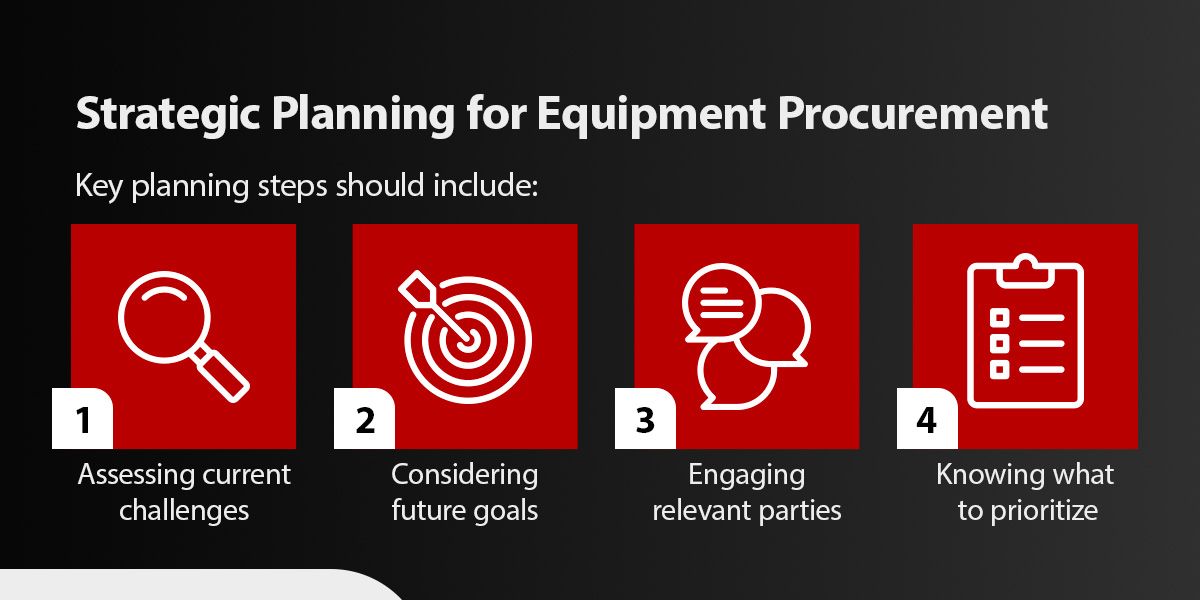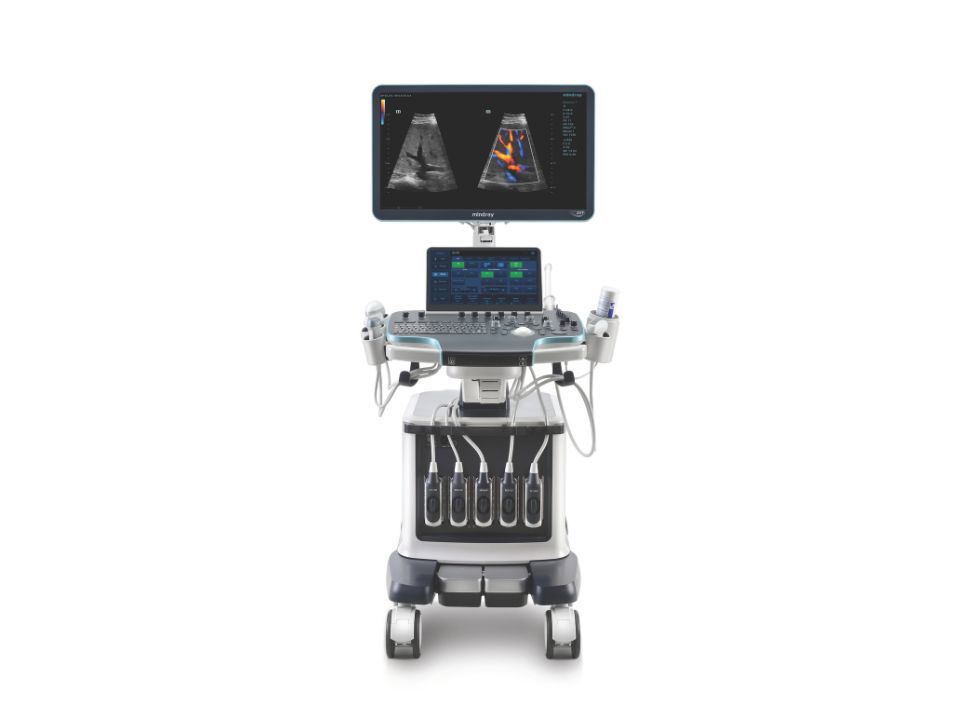Equipment Solutions for Growing Radiology Departments
09-23-2025

From early detection to continued monitoring, imaging supports almost every stage of patient care. As the clinical applications for radiology grow, more departments are considering how they can deliver faster, more dependable results through advanced equipment and technology solutions.
The opportunity to scale imaging capabilities has never been greater. Scalable radiology equipment solutions grow with the department. These include modular platforms with upgrade pathways and multifunctionality, supporting both immediate and future needs.
Below, we’ll explore strategic equipment solutions for growing radiology departments, focusing on optimizing investments and planning strategically.
Common Challenges With Growing Radiology Departments
Many radiology departments in hospitals and other healthcare facilities experience the following challenges:
1. Rising Patient Volumes and Case Complexity
Over the past decade, radiology has taken on a much more central role in diagnostics and care planning. With this shift comes higher patient volumes and more complex imaging requirements. For example:
- Emergency departments rely heavily on fast turnaround times
- Oncology clinicians need precise, repeatable scans
- Primary care physicians are ordering more imaging than they did previously
2. Aging Infrastructure and Outdated Systems
In many facilities, legacy equipment is still used despite being well past its prime. These systems may be slower and less efficient, and they often cannot integrate with newer information technology (IT) systems. This lack of integration can create friction in the workplace.
3. Space Constraints
Many radiology departments were built decades ago. For this reason, attempting to fit new equipment into smaller, less ergonomic spaces can place a significant strain on clinicians and other healthcare professionals.
4. Budget and Procurement Hurdles
Radiology department leaders may be under pressure to justify their equipment requests. For example, hospital budgets may be tight, and approval processes can be long and complex. There is also the challenge of multiple stakeholders with sometimes conflicting priorities, such as:
- Clinicians want features that support more effective diagnostics
- IT wants to ensure cybersecurity and interoperability
- Finance wants continuous value and a documented return on investment
Balancing all of these priorities while staying on schedule can be challenging.
The Evolving Landscape of Equipment for Radiology Departments
Radiology departments don’t need more machinery — they need the right machinery. Thoughtfully chosen and purposefully integrated solutions can directly address many drawbacks and help radiology teams reduce bottlenecks, improve care delivery, and scale over time.
Radiology equipment has advanced rapidly over the past decade. Trends like precision diagnostics, outpatient imaging expansion, and hybrid imaging approaches are shifting how these departments meet various patient care needs.
At the same time, purchasing decisions have become more complex. In addition to radiologists, other stakeholders including finance leaders, biomedical engineers, IT specialists, and hospital administrators play a role. These stakeholders need to collaborate to ensure that investments meet technical requirements, as well as overarching care goals.
Key planning steps should include:
1. Assessing current challenges: Conducting workflow assessments helps identify current gaps
2. Considering future goals: Forecasting imaging volume growth can help you understand the type of equipment needed in the future to meet these needs
3. Engaging relevant parties: Engaging stakeholders from radiology, IT, biomed, finance, and leadership ensures all necessary parties can provide their input
4. Knowing what to prioritize: Prioritizing systems that offer scalability, flexibility, modular upgrades, integration capabilities, and vendor support ensures the radiology department can meet multiple needs across the organization
Technology Solutions for Growing Radiology Departments
Today’s radiology solutions go far beyond the imaging hardware. A new wave of intelligent, connected technologies is helping departments improve workflows, reduce errors, and speed up diagnoses.
Artificial Intelligence (AI) and Workflow Automation
AI tools are increasingly helping radiology departments in multiple ways:
- Analyzing large amounts of data: AI algorithms help analyze data from medical imaging to find connections between the images and the patient’s condition
- Detecting possible disease: Clinicians can better analyze medical images through AI-powered systems
- Improving workflow: AI can automate certain routine tasks to help protect radiologists' time
- Standardizing across locations: AI-driven tools uphold efficiency and reproducibility across locations by standardizing terminology and reporting, reducing the risk of errors, misinterpretations, and inconsistencies
Imaging and Interoperability
As imaging departments become more decentralized, enterprise solutions unify data across locations and service lines. Interoperability can help ensure that data flows efficiently into electronic medical record systems and can be accessed across care teams.
Modality Innovation
New features such as faster scan protocols and voice command capabilities are helping technologists work more efficiently and comfortably. One example is ZONE Sonography® Technology (ZST). This leap forward in ultrasound performance supports faster imaging without compromising clarity, helping departments serve more patients.
Best Practices for Equipment Integration
Bringing in new technology is only part of the challenge. Ensuring it integrates smoothly and is adopted successfully requires thoughtful planning.
1. Prioritize Preventive Maintenance
Regular maintenance is an essential part of any technology investment strategy. A preventive maintenance strategy involves performing routine inspections and servicing machinery to keep systems running smoothly and avoid unexpected failures. By addressing minor issues early, departments can extend the lifespan of their machines and reduce downtime that can disrupt patient care.
2. Invest in Ongoing Training
Continuous training ensures radiologists can take full advantage of advanced system features, helping to reduce errors and increase end-user confidence. Ongoing training can also help streamline the onboarding process, which can be critical in fast-paced clinical environments.
3. Encourage Cross-Departmental Collaboration
Radiology teams that collaborate with other departments from the beginning can implement successful solutions that support clinical and operational goals. For example, aligning with IT ensures new systems will integrate smoothly with existing platforms. Involving finance early allows for thoughtful conversations around purchase opportunities.
Radiology departments grow with proactive planning. Whether expanding service lines, modernizing equipment, or streamlining workflows, the right approach can help create a lasting impact across clinical teams as well as patient populations.
Mindray supports this journey with scalable solutions backed by expert service and a commitment to partnership. With advanced solutions like ZONE Sonography Technology, hospitals can build more agile radiology departments as the organization continues to scale.
Contact us today to learn more about how we support clinical, operational, and financial goals.

